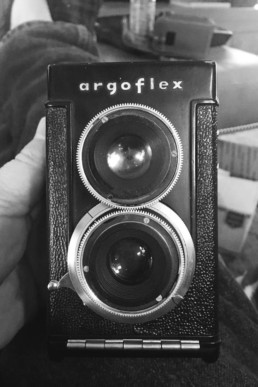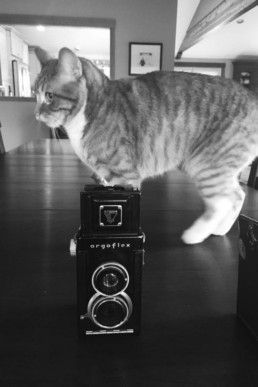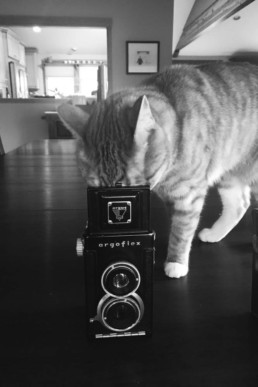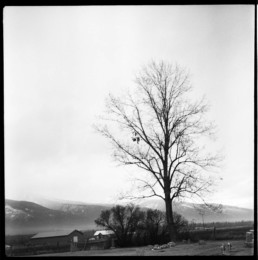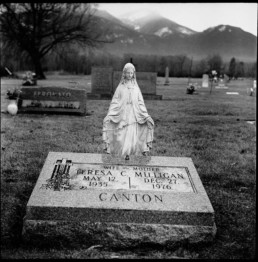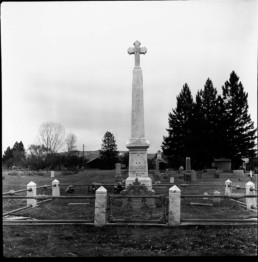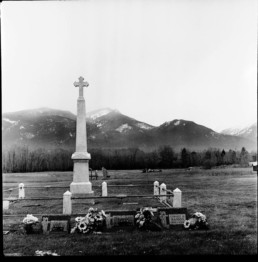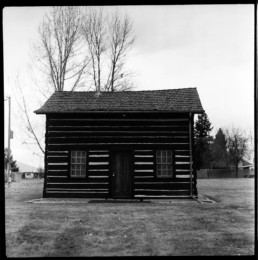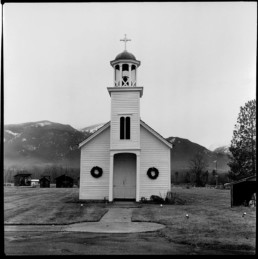Lately I’ve taken notice of how often people I meet comment on my persistent travel. I do travel as much and as often as I can manage it, but the reality is, I don’t travel all the time. And lately, much of my travel has been for purposes other than to wander and take photographs. True, I always have a bag of cameras slung over my shoulder, but I don’t always get to use them as I like. The reality is, I find myself very often in the familiar, and craving opportunity to see things in a new way. This post is about how I recently purchased a 1948 Argoflex EL on eBay and found new ways to explore familiar places.
I’ve found a vibrant community of photographers on Flickr and Instagram who are buying old cameras in junk shops and on eBay. They clean, repair, and shoot these dinosaurs with great results.
My work of late has largely been film-focused, and mostly 4×5. I have a couple of 4×5 cameras. The most used these days is my beautiful Chamonix F-2. I love that I can set out and spend an entire day shooting and come home with only 4 exposures. Each is thoughtful, slow and intentional (even when I labor to make the image look otherwise). When I shoot pinhole, I will often spend 30-40 minutes setting up the shot and metering, and the exposures themselves can take up to an hour.
I find that if I am careful and deliberate, I can avoid most of the issues that interfere with a good negative. With large format, the pitfalls are numerous: dirt or dust in the film holder, light leaks from old holders or dark slides that are not secured, fingerprints on film, etc. I’ve experienced each of these issues many times, but have learned that there are procedures that can prevent them all, and I’m attentive to those at all times.
Aside from technical failures, there is one huge failure I’ve encountered: lack of inspiration. I have on many occasions found myself at a location that I’ve wanted to photograph, but when I return, I’m not inspired. Sometimes, it’s because the conditions are much different, other times, it is that I’ve thought about the location and how I would shoot it too much, and when I get there, set up, take the shot, I get images that are just mediocre in interest. Even when I get a shot that it technically good, I often feel the shot lacks interest.
At times, I blame the location or the conditions. In Montana, this is really easy to do between November and April. This place is unbelievably monochromatic, and daylight is limited to about 6 usable hours a day. Sunrise is generally more photographic than sunset but it is usually freezing cold and unpleasant to be out at dawn when the temperature is within a few degrees of zero.
So, I decided I was going to find an old medium format camera and try to think about situations differently. There were several reasons why I decided on the camera I did.
Being a large format photographer, I am accustomed to looking at images on the ground glass, and for this, I always shoot from a tripod. I wanted a camera that liberated me from the tripod. I wanted a camera that still retained the ground-glass viewfinder (albeit corrected with a mirror) and not a rangefinder with an eye-piece to look through. I wanted to look down into the camera to focus, thus enabling me to hold the camera lower, closer to the ground and not up in my face. I also wanted to find a camera that was inexpensive, and which shot 6×6 cm square format on 120 film. I prefer larger negatives, and I’ve got many 35mm cameras already. I’ve largely avoided medium format, so I wanted something that put me in that format.
One of my contacts on Instagram, Jennifer Froula Weber (if you’ve read this far, you should definitely follow her) posted in her story about the Argoflex TLR, and my interest was piqued. I asked her several questions about hers and made the impulsive decision to find one. Within a few hours, I had located several on eBay ranging in price from $10 to $150, and I purchased the $10 one on a whim. I had a credit from eBay which covered the cost of shipping, so the total purchase was just $10!
A few days later, a box arrived in the mail, and I began the laborious process of cleaning and setting it up. I should state here that the camera was in great shape considering its age, but it was filthy, inside and out. I had to remove the viewer and screen and clean the mirror carefully, and I used about 50 Q-tips removing grime from various surfaces.There are a number of things to consider about these particular cameras:
Argoflex produced a variety of twin-lens reflex cameras starting in 1940. From 1940-1948 they produced the Argoflex E, which was a plastic-bodied design with a 75mm f/4.5 lens. The original versions (those produced up to 1946) accepted 120 and 620 film, but after 1946, they accepted only 620.
In 1948, the Argoflex E was retired and two new designs were produced. One was the Argoflex II designed by Harley Earl (famed head of design at General Motors). These cameras had a beautiful design but were plagued with faulty film counter and auto film stop problems. As a result, they were recalled and production discontinued.
A second version based on Harley Earl’s design of the Argoflex II was produced in 1948. Called the Argoflex EM, this all-metal body camera was essentially an all-metal version of the E with a simplified film counter and film stop. It was only produced in 1948 and soon evolved into the Argoflex EF which added flash sync. The EF was produced from 1948-1951.
In 1951, the Argoflex was redesigned and moved away from metal body construction. The most notable of these models is the Argoflex 40 which was produced into 1954 followed by the Argoflex 75, which remained in production until 1964. These models were all-plastic body designs.
My Argoflex is an early Argoflex EF, dating to 1948 or early 1949 (there are some discrepancies in the serial numbers for these models, which makes dating precisely a challenge).
This camera will not accept 120 film. Only 620, which is the exact same film as 120, just on a smaller spool. So, the first challenge was re-spooling 120 film onto a 620 spool. Once this was accomplished, I had to find a second 620 spool to use as the take-up spool. Fortunately, I found one at a local camera store. You can actually still buy 620 film, but it’s more expensive than 120. (The Film Photography Project and others still stock a variety of color and black & white films in 620 and they sell 620 spools for $4.99 each.) My local camera store gave me one when I purchased some film, so I’d recommend asking around before you buy.
Once the 620/120 film issue was resolved, I loaded the film into the camera and set out to shoot.
The experience of shooting a 1948 Argoflex is mostly similar to shooting any other TLR camera except that the viewfinder is incredibly dark. The model EF, like most Argoflex TLRs, has an f/4.5 taking and viewing lens, which is not very bright. Age on the mirror and glass of the viewing screen probably also factors, but the result is, this is a very difficult camera to focus even in moderately bright daylight.
The viewfinder does not have a magnifier, either, so it’s all down to you and your eye.
Unlike many other TLR cameras that have a focus nob on the side (which moves both the lenses nearer/farther from the film plane to focus, the Argoflex has focus on the lens itself which connects to the viewing lens with a gear. There are markings for focus distance on the viewing lens. The 75mm lens has f-stops from f/4.5 to f/18. It is very unlikely you’ll have a light meter that gives readings for f/12.7 so expect there to be some head-scratching and making adjustments before exposure.
But all that said, the resulting images this camera produces are pretty incredible. The lenses are amazingly sharp (not that you’ll notice this until you see the developed negatives).
The images in this post were shot on Kodak TX400 film at ISO 400, on a cloudy December day. All were shot at the St. Mary’s Mission in Stevensville, MT shortly after midday. The film was developed in XTOL 1:1.


